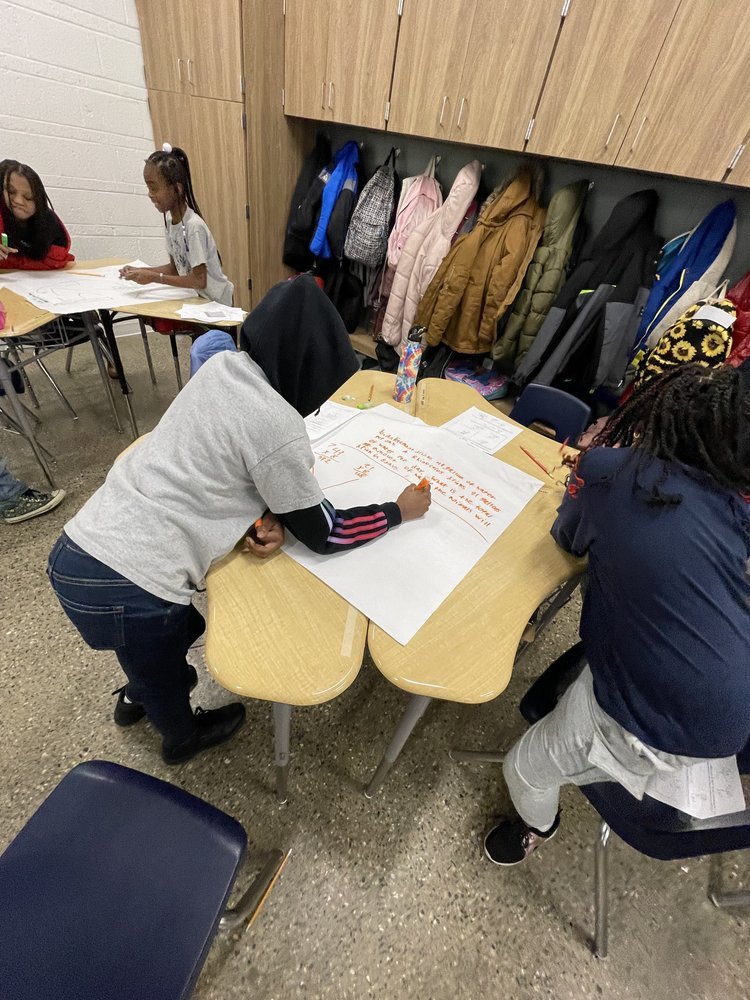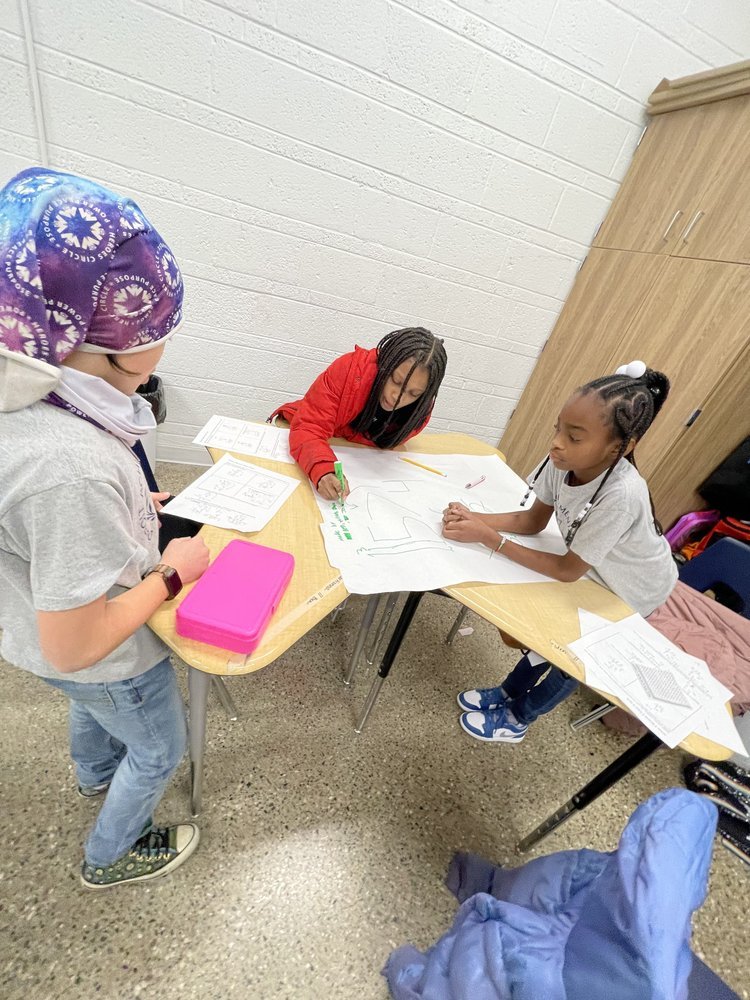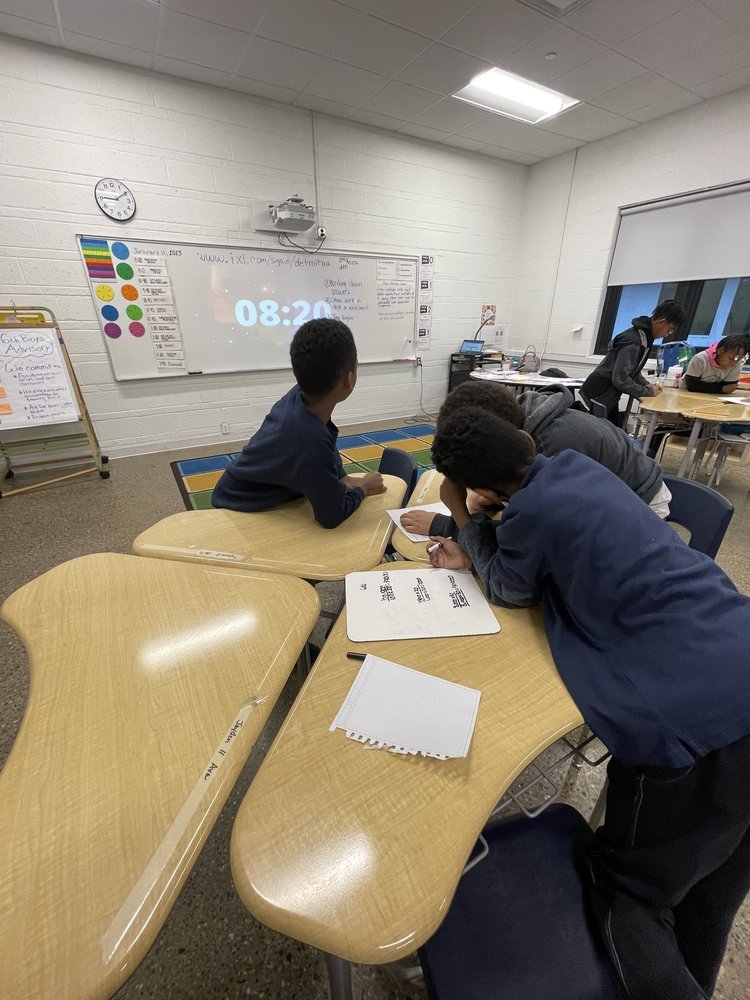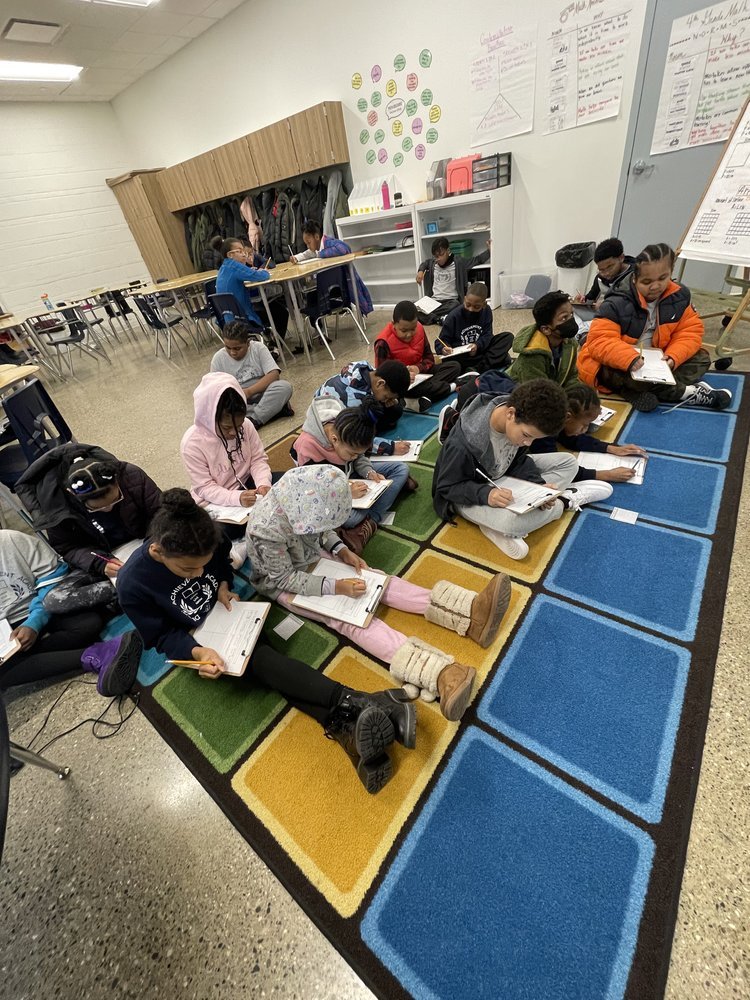Math // Why We Grapple
Grapple Problems, though not a new concept, became a significant part of our daily and weekly lessons this school year. You may be wondering, “What is a Grapple Problem?” Grappling with a concept is the process of struggling through something to come up with a solution. This differs from traditional teaching, because it is 100% student-led. Students are given a task to complete, a set of directions, necessary tools for solving and then given time to figure out any possible solutions to answer the question that was posed. At the end of the designated time, we debrief as a group to go over different methods that were used, and any solutions that students came up with.
We first started by using word problems within our daily lessons. Students would be given time to read the question, draw a picture then write a solution. A method that is commonly known as “Read, Draw, Write (RDW).” The RDW questions were initially met with a lot of pushback from students. In the 5-7 minutes that they were given to solve, I would often hear complaints of “I don’t know how to do this,” I don’t know what the answer is,” or, “Can you just tell me what to do?” My response would always be for students to just try something; whatever they were thinking, write it down and we would go from there. No matter how many times this was said, there were still students who, at the end of our grapple time, would have completely blank papers. We continued this process until students got the hang of solving problems without being led by their teacher. Eventually, we got to a place where students became more accustomed to attempting problems independently even if they didn’t know how. Our 5-7 minutes of RDW transitioned into Grapple Fridays where students would spend an entire class period solving a Grapple Problem.
It was extremely important to me for students to understand the process of grappling. As stated before, through traditional teaching methods, students are accustomed to relying on their teachers to help them through the learning process. If this is the only type of instruction that students receive, they learn to rely on their teachers more and more as opposed to thinking critically and solving problems on their own. Prior to our focus on grappling, I would consistently see students do well on their classwork, but completely bomb a quiz or test. This frustrated me until it finally clicked that the quiz/test is the only time that students are required to work completely independently. Even when they were doing their classwork, students had the option to work with a partner, or ask questions if they needed help. This is almost never the case when working on a quiz or test. On the flip side, after grappling became a more consistent part of our routine, students’ grades and scores went up. Students looked forward to Grapple Fridays, participation during weekly lessons increased and students became more joyful learners. Obviously, grappling isn’t the only reason for the amount of success students experienced this school year, however it definitely helped to boost their confidence as math learners and problem solvers.









